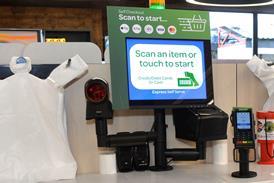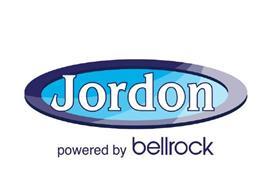Every year battery manufacturers seem to launch the ‘longest lasting battery ever’. To the uninitiated this might appear to be just some marketing ploy, but apparently the manufacturers really have to – to keep up with all the high-drain appliances that consumers love. Digital cameras and MP3 players gobble battery power up at such a rate it’s a wonder any cell can keep up. This year’s new battery technology comes via Energizer’s Ultimate Lithium, Duracell’s Ultra M3 and Panasonic’s Digital Xtreme Power.
Energizer Ultimate Lithium boasts that it is the world’s longest-lasting battery in high-tech devices and is the most technologically advanced battery in the marketplace.
It lasts seven times longer than standard alkaline batteries in digital cameras, so whereas an alkaline battery would enable you to take between 80 and 90 shots on a digital camera, Ultimate Lithium would give you 650 or more shots. However there’s a new Nikon camera on the market that takes account of the type of battery being used (alkaline, lithium or rechargeable) then optimises its performance. Energizer reports that it got 780 shots from its Lithium battery in this camera. So consumers typically get seven times the performance but thankfully not at seven times the price. Ultimate Lithium, says Energizer, is just twice the price of standard alkaline batteries. What is more, Ultimate Lithium isn’t just longer lasting, it’s also 33% lighter than standard alkaline batteries, can work in extreme conditions, and has a 15-year shelf life.
It comes in the two most popular sizes: AA and AAA, with AA available in both two- and four-cell packs and AAA in a two-pack, and from November, a new four-pack.
One could argue that Lithium is bad news for forecourt retailers – because if the batteries last seven times longer than alkalines, consumers won’t be buying them nearly as often. However, Paul Ardron, UK marketing director for Energizer Lithium, doesn’t see the development as a negative one for retailers. “Forecourts will earn a better cash margin on Lithium because of their price premium, however their volume sales will still come from alkaline batteries.”
Meanwhile, Energizer Ultimate is the company’s ‘best ever’ alkaline but even this will be improved further shortly, offering consumers 15% more power.
Panasonic too is making bold claims – its Digital Xtreme Power is said to give consumers three times more pictures, while its Xtreme Power alkaline battery claims to give 15% more music in a CD player.
Over at Duracell, the company’s Ultra M3 premium power range has a new and improved formula for longer-lasting power, so too does its Duracell Plus range for everyday devices. However, the big news from Duracell is the launch of Prismatics CP1, which it claims is the first CP1 lithium primary prismatic battery to be launched onto the UK market. The battery has been designed to fit slimline digital devices.
PACKAGING
You might not think packaging for batteries is that important, but if recent activity in the market is anything to go by, it definitely is. That’s because there can be a lot of consumer confusion about batteries, along the lines of ‘which ones do I need?’. So manufacturers have invested heavily to make everything crystal clear.
Panasonic’s packs, for instance, have clearer branding and are easier to open. More importantly tests in 13 different countries found twice as many consumers were attracted to the new look. That attraction might also come from the fact that appliances are pictured on each battery pack so consumers can see which battery fits which type of appliance.
Meanwhile, Energizer has gone for the ‘does what it says on the tin’ approach for the packaging on its Ultimate Lithium range with ‘Lasts up to 7x longer in digital cameras’ emblazoned on-pack. There is also a pictorial reference showing the devices that will benefit most from the new battery innovation.
Duracell introduced colour coding to help reduce customer confusion about which batteries they needed. The company says it’s been well received by retailers and consumers, with many retailers now using colour coding on their fixtures.
RECHARGEABLES
There’s a big buzz about rechargeables as consumers worry two-fold about waste – wasting their money on buying battery after battery; and waste disposal – just where do all those used-up batteries end up?
As a result the rechargeable category is performing well, growing at a rate of 21.8% per annum, albeit from a small base. Uniross reports that rechargeable batteries now account for nearly 10% of the total battery market – up from 5% two years ago. Simon West, marketing controller of Uniross, says: “People are recognising that a charger and batteries makes sense for their pocket as well as the environment.”
He estimates that power-hungry digital cameras are costing photographers about £16 in throw-away batteries for every 600 pictures they take but says with Uniross’ new charger and battery packs, they can take 400,000 pictures for less than £25. The Sprint CR-V3 and Sprint CR-123 have been designed specifically for digital cameras and will fit more than 250 models.
“The economics of rechargeables are simple: one battery can be re-powered more than 500 times. You recoup the cost after the third or fourth recharge,” says West.
Paul Ardron of Energizer comments: “Consumers are becoming increasingly aware of the concept of rechargeables. Consumer familiarity of charging batteries has come from mobile phones, digital cameras and laptops. With the increasing number of battery operated devices around the home, rechargeable batteries now present an economic and efficient solution, plus they are environmentally friendly.
“Our rechargeables last three times longer than standard alkalines and can be recharged up to 1,000 times – that’s a great value-for-money proposition for consumers.”
Obviously a forecourt would need to sell a charger as well as rechargeable batteries. Energizer has a compact charger that retails for between £10 and £15 and comes complete with four batteries. Ardron reckons this would make a great Christmas present. He also says it’s worth considering the one-hour and 15-minute chargers because both come with in-car chargers.
Recharging batteries can still seem a complicated process to some people, which is why Varta has launched the Easy Energy range for first-time users who want a simple, safe and value-for-money charger. The pocket charger retails at £9.99, and can charge AA and AAA cells simultaneously, whereas the multi charger (£17.99) will fit any battery size behind a child-proof safety lid. And for heavier battery users there’s the Power Play mobile charger which retails at £39.99 with a car adapter, and £29.99 without.
IN-STORE SITING
The siting of batteries in forecourts and convenience stores is a contentious issue. After all, they are high-value items that can be tempting to would-be shoplifters but suppliers reckon forecourts are missing out on sales by hiding them away behind the till.
Panasonic’s marketing and communications manager, Tim Clark, says having batteries displayed behind the counter is definitely a barrier to sales. “They are much better being displayed where consumers can pick them up and have a close look at them. Yes, your pilferage levels might increase slightly if the batteries are out on the shop floor, but your sales would increase more so.”
Energizer’s Paul Ardron says the more a forecourt shop wants to be like a supermarket, the more they need to dual-site batteries: “Location is critical – if you stock CDs then put batteries near CDs, also put them next to gadget magazines, and near to kids toys – there really are lots of opportunities, but retailers are not exploiting them because they are hiding their batteries away. I know space is an issue but we provide clip strips that can be used on the end of an aisle.”
Flavio Palumbo, senior business manager, Duracell, agrees: “We know that visibility drives sales of our brand. It is crucial for retailers to display batteries clearly and effectively in high-traffic locations around the store, encouraging impulse purchases and potentially increasing profit in-store. Surplus stock should also be ordered for Christmas, to meet the sudden increase in consumer demand.”
Finally, with sales of batteries peaking at Christmas, so too does the advertising and promotional activity. Panasonic’s Tim Clark says forecourts should cash in on any promotional offers available – his company is doing ‘4+4’ packs in the run up to Christmas as well as 50% extra free packs.
CASE STUDY: DIGITALLY DOES IT
When Forecourt Trader of the Year winner 2005, Susie Hawkins of Budgens Barnwood in Gloucester, was looking for something a little different to fill some dead space in her 2,800sq ft store she came up with a digital kiosk. She explains: “We had some dead space either side of our electric glass doors – we put baskets on one side and came up with the digital kiosk for the other side. It’s tiny with a footprint of just 40cm x 40cm and rises to standard gondola height but it’s amazing what it can do.”
What it does is prints photos from memory cards, CDs and mobile phones and it can produce CDs too. Says Susie: “I wouldn’t go so far as to say that it’s really popular, but the more people get to know about it, the more they are using it. You do need to educate your customers about it. However the kids love being able to print a picture from their mobiles for just 20p.” Prices are 20p a print up to 20 prints, then 10p a print after that. Susie recognises that it’s not cheap but says it’s so convenient. “The only problem we’ve had is that some people come in and print off a CD of 60 prints without realising how much it’s going to cost.”
Susie bought the machine outright but admits it will be some time before it pays for itself. “We wanted something different and that’s what we’ve got. We’re lucky because if it doesn’t do well at this site we can move it to another one in the group.”
BATTERY FACTS
- The UK battery market is worth £321m
- The average UK household owns 25 battery-operated devices
- Duracell leads the category with a 48% market share
- Over 90% of everyday battery sales come from just five key sizes: AA,
AAA, 9V, C and D
Source: Duracell
MERCHANDISING TIPS
- Merchandise by brand and cell type
- Site larger packs at eye level to encourage trade up
- Ensure sufficient space for top-selling lines, especially AAs
- Place secondary displays and promotions in high-traffic locations
- Use pos as visual aids for consumers

















No comments yet